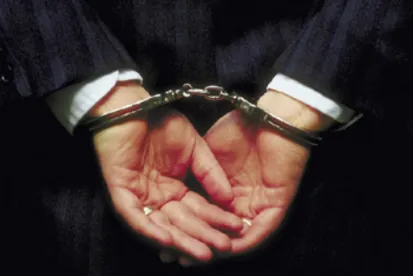The Second Circuit found no proof of material misrepresentations as to some charges, and held that expert testimony was improperly excluded as to others.
On December 8, the US Court of Appeals for the Second Circuit overturned the criminal conviction of Jesse Litvak, a former bond trader at broker-dealer and investment banking firm Jefferies & Co., reversing the convictions on all counts of fraud against the United States and making false statements, and vacating the convictions and remanding for a new trial on 10 counts of securities fraud. The Second Circuit held that the government had failed to prove the materiality of Litvak’s misrepresentations, and that the district court had improperly excluded expert testimony concerning materiality.
Background
In January 2013, Litvak was indicted on allegations that from 2009 to 2011, he fraudulently misrepresented the prices of certain residential mortgage-backed securities (RMBS) to, among others, counterparties at public-private investment funds (PPIFs), investment vehicles created and overseen by the Treasury Department as part of the Troubled Asset Relief Program (TARP). Specifically, the government alleged that Litvak had fraudulently misrepresented (i) the acquisition cost of certain RMBS; (ii) the resell price of certain RMBS; and (iii) that Jefferies was an intermediary in certain RMBS transactions, brokering on behalf of an unnamed third-party seller, when in fact it owned the RMBS.
In March 2014, a jury convicted Litvak on 10 counts of securities fraud, one count of fraud against the United States, and four counts of making false statements. The District of Connecticut subsequently denied Litvak’s motion for judgment of acquittal or new trial[1] and sentenced him to 24 months’ imprisonment, three years’ supervised release, and a $1.75 million fine.
No Materiality, No Fraud
With respect to Litvak’s conviction on charges of fraud against the United States and making false statements, the Second Circuit acknowledged a fatal flaw in the government’s case concerning the materiality of Litvak’s misrepresentations. Under controlling precedent interpreting the relevant statute,[2] a misrepresentation is only material if it has “a natural tendency to influence, or be capable of influencing, the decision of the decisionmaking body to which it was addressed.”[3] The parties did not dispute that, for purposes of the charges, the Treasury Department was the “decisionmaking body.” Yet the government failed to adduce any evidence that the Treasury Department itself had made any investment decisions at all, let alone decisions that were “reasonably capable of being influenced by Litvak’s misstatements.”[4]
To the contrary, the government’s chief witness—the former Chief Investment Officer for the Treasury Department Office of Financial Stability—had testified that although Treasury supervised the PPIFs, it was the PPIF investment managers, not Treasury officials, who decided which RMBS to buy or sell, and that Treasury had “no authority to tell the investment managers [of the PPIFs] which bonds to buy.”[5] The government’s lack of evidence “that Litvak’s misstatements were capable of influencing a decision of the Treasury”[6] therefore foreclosed the question of materiality, notwithstanding evidence that Litvak’s misrepresentations negatively impacted Treasury investments and that Treasury learned of this impact through monthly reports submitted by PPIF managers. The court then held: “because the government adduced insufficient evidence for a rational jury to conclude that Litvak’s misstatements were reasonably capable of influencing a decision of the Treasury, we reverse the District Court’s judgment of conviction as to the fraud against the United States and making false statements charges.”[7]
Expert Testimony Improperly Excluded
Although the Second Circuit also overturned Litvak’s conviction on charges of securities fraud, it did not reverse the convictions, but merely vacated and remanded for a new trial.
As an initial matter, the Second Circuit held that, contrary to Litvak’s assertions, a reasonable juror could have concluded that Litvak’s misrepresentations were material to the investment decisions of the PPIF managers, based on testimony from several transaction counterparties that Litvak’s misrepresentations were “important” to their decisions to buy or sell certain RMBS.
The court then rejected Litvak’s attempt to rely on a Second Circuit case holding that inflated transaction fees were non-material,[8] citing as distinguishing factors the substantial sums of money at play in Litvak’s case, the opaqueness of the RMBS market, and the enhanced public interest given the Treasury Department’s involvement as a “major investor in several of Litvak’s counterparties.”[9] The court also summarily rejected Litvak’s argument that the government’s evidence was insufficient to support scienter because it failed to show “contemplated harm” or “intent to harm.” This element, while necessary to prove scienter in the context of mail fraud and wire fraud, is inapplicable in the context of securities fraud, where what is required is an “intent to deceive, manipulate or defraud.”[10]
But the Second Circuit ultimately vacated Litvak’s securities fraud conviction on evidentiary grounds, holding that the district court exceeded its discretion in excluding testimony from two of Litvak’s expert witnesses concerning the materiality of his statements. In particular, the district court excluded the testimony of expert witness Ram Willner that statements about RMBS value from sell-side bond traders are “generally biased” and “often misleading” such that they are rarely given credence by counterparties, and that buy-side traders typically determine the prices they are willing to pay for RMBS through complex computer models prior to negotiating with traders. Such testimony, the court held, was directly relevant to whether Litvak’s misrepresentations were material to PPIF investment managers’ decisions to buy. Notably, the court held that excluding this testimony was not harmless error: it left the defense with no evidence to show that Litvak’s statements may not have been material. Further, the Second Circuit found that the district court erroneously excluded additional Willner testimony that “minor price variances would not have mattered to sophisticated investors”[11]—although it rejected challenges to the exclusion of Willner’s testimony regarding fair market value and profitability—but because the court had already identified a non-harmless error necessitating vacatur, it did not determine whether that error was harmless.
The Second Circuit also held that the district court improperly excluded testimony from another expert witness, Marc Menchel, who proposed to testify that because of the arms-length nature of the broker-dealer/counterparty relationship, Litvak was not acting as an agent for the counterparties, but rather as a principal. Such testimony, the court held, “would have been relevant to materiality” because a jury could construe misrepresentations as “having great import to a reasonable investor if coming from the investor’s agent,” whereas the same jury might construe a principal’s statements as less important.[12] Menchel was prepared to testify that Jefferies’s role was that of “a principal … earning a profit as would any other buyer or seller,”[13] and not an agent earning a commission for the trade. The court observed that without Menchel’s testimony, particularly in the context of RMBS, “the jury might easily have misconstrued the nature of the transactions at issue.”[14]
Finally, the Second Circuit addressed additional evidentiary issues solely to assist the district court on remand on the securities fraud counts.
[1] United States v. Litvak, 30 F. Supp. 3d 143 (D. Conn. 2014).
[2] 18 U.S.C. § 1031. Because the parties agreed that materiality is an element of Section 1031, and that the requirement was coextensive with Section 1001’s materiality element—Litvak was charged with four counts of violating section 1001—the court assumed as much in its analysis.
[3] United States v. Litvak, No. 14-2902-cr, at *21 (2d Cir. Dec. 8, 2015) (quoting United States v. Coplan, 703 F.3d 46, 78 (2d Cir. 2012), cert. denied, 134 S. Ct. 71 (2013)).
[4] Id. at *27.
[5] Id. at *26 n.12.
[6] Id. at *25.
[7] Id. at *33.
[8] Feinman v. Dean Witter Reynolds, Inc., 84 F.3d 539 (2d Cir. 1996).
[9] United States v. Litvak, No. 14-2902-cr, at *43.
[10] Id. at *45 (quoting United States v. Newman, 773 F.3d 438, 447 (2d Cir. 2014)).
[11] Id. at *65.
[12] Id. at *72-73.
[13] Id. at *74.
[14] Id.





 />i
/>i

